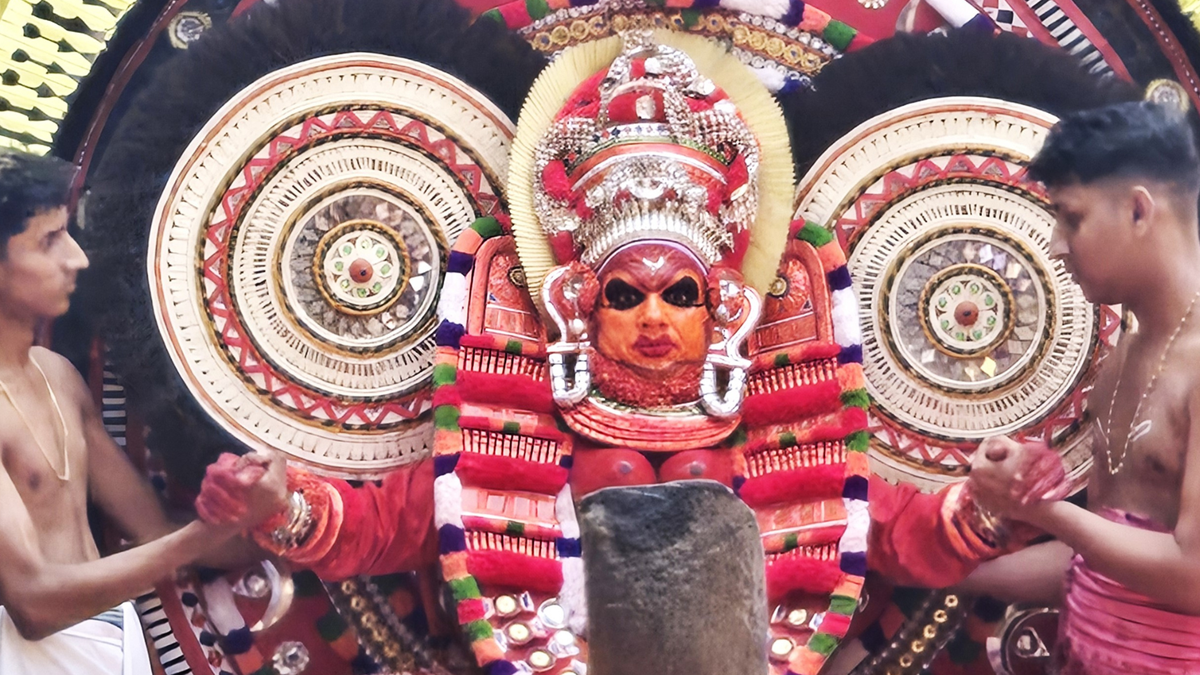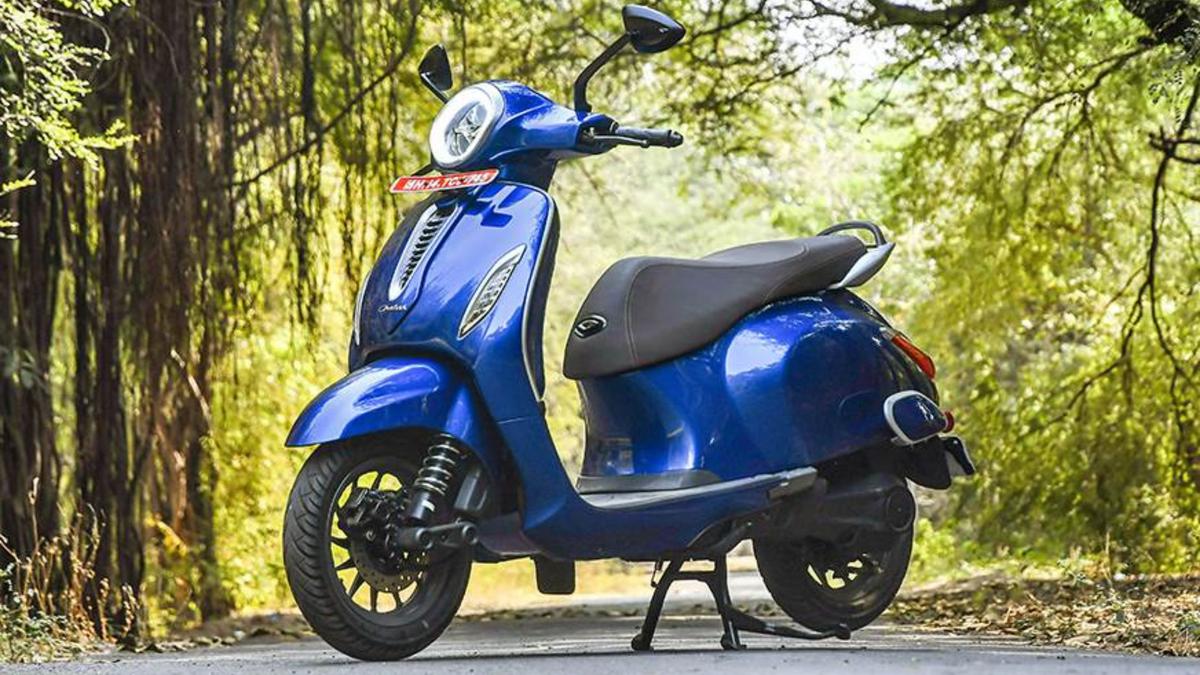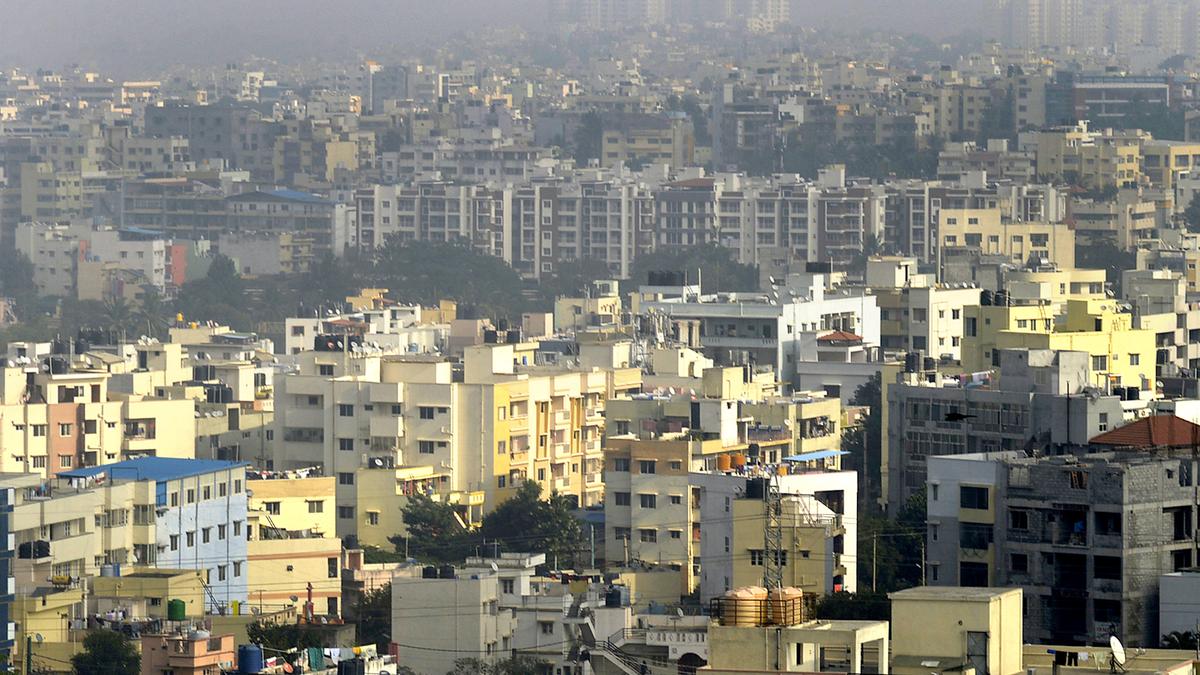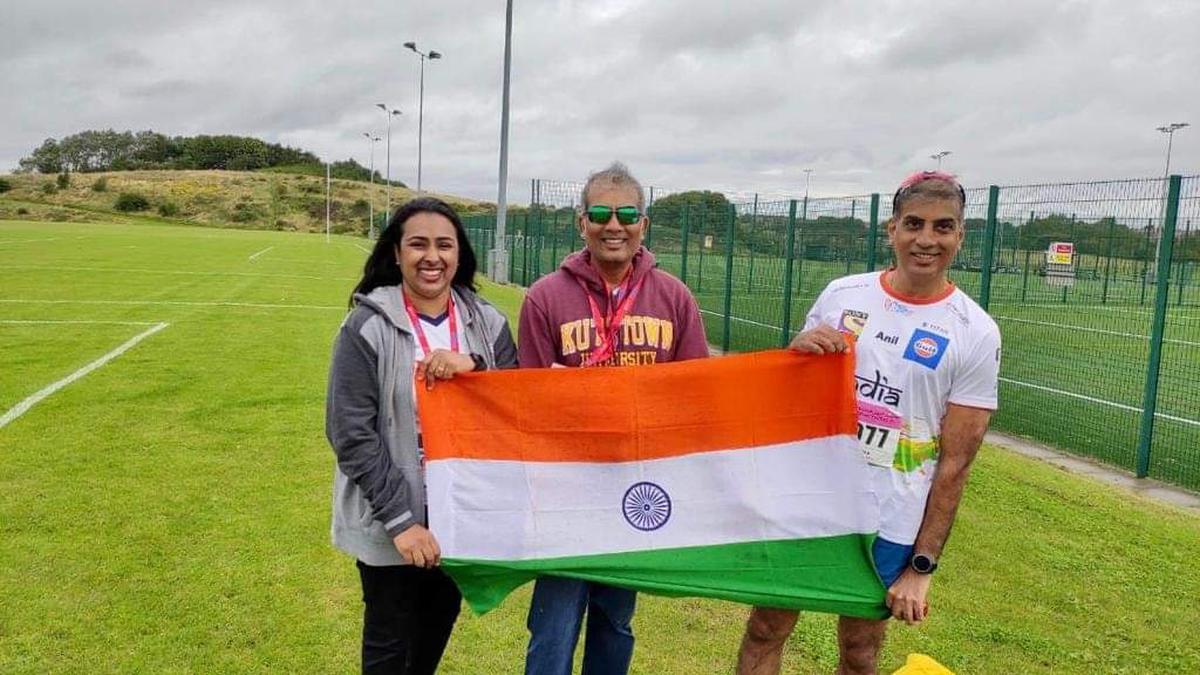It’s still dark at 4.20 a.m. and the crowds are slowly building. The atmosphere is akin to a carnival, underpinned by stalls selling plastic toys and hard-boiled eggs. Friends are greeting each other; one of our set is busy trying to buy a baby’s friendship with biscuits, but Biscuit Baby firmly keeps her distance. The regulation quota Kerala has of grey-heads is on full display here. As the chenda beats start to gather steam, the air slowly turns electric.
We are at the Thee (fire) Chamundi or Ottakolam theyyam, and the meleri (sacred pyre) is slowly being prepped to become a mass of glowing embers into which the koladhari (practitioner) will repeatedly fling himself. As with all theyyams, this too has a back-story, of Agni the fire god aggressively challenging all the gods. Vishnu takes up the challenge, throws himself into the fire 108 times and of course, emerges unscathed each time, thoroughly extinguishing Agni’s boastful pride.
The meleri stoked to smouldering embers
| Photo Credit:
Sheila Kumar
Our ‘storyteller’, the splendid performing artist Sangeeth Bhaskar, has managed to steer us to a vantage point. But here’s the thing: wherever we stand, people shuffle along to give us a better view, sometimes giving up their own spots quite happily. We meet with this Malabar brand of graciousness all through the trip, and realise that old cliché is actually true: the north Keralite is really the nicest in all of the tiny strip that makes up God’s Own Country.
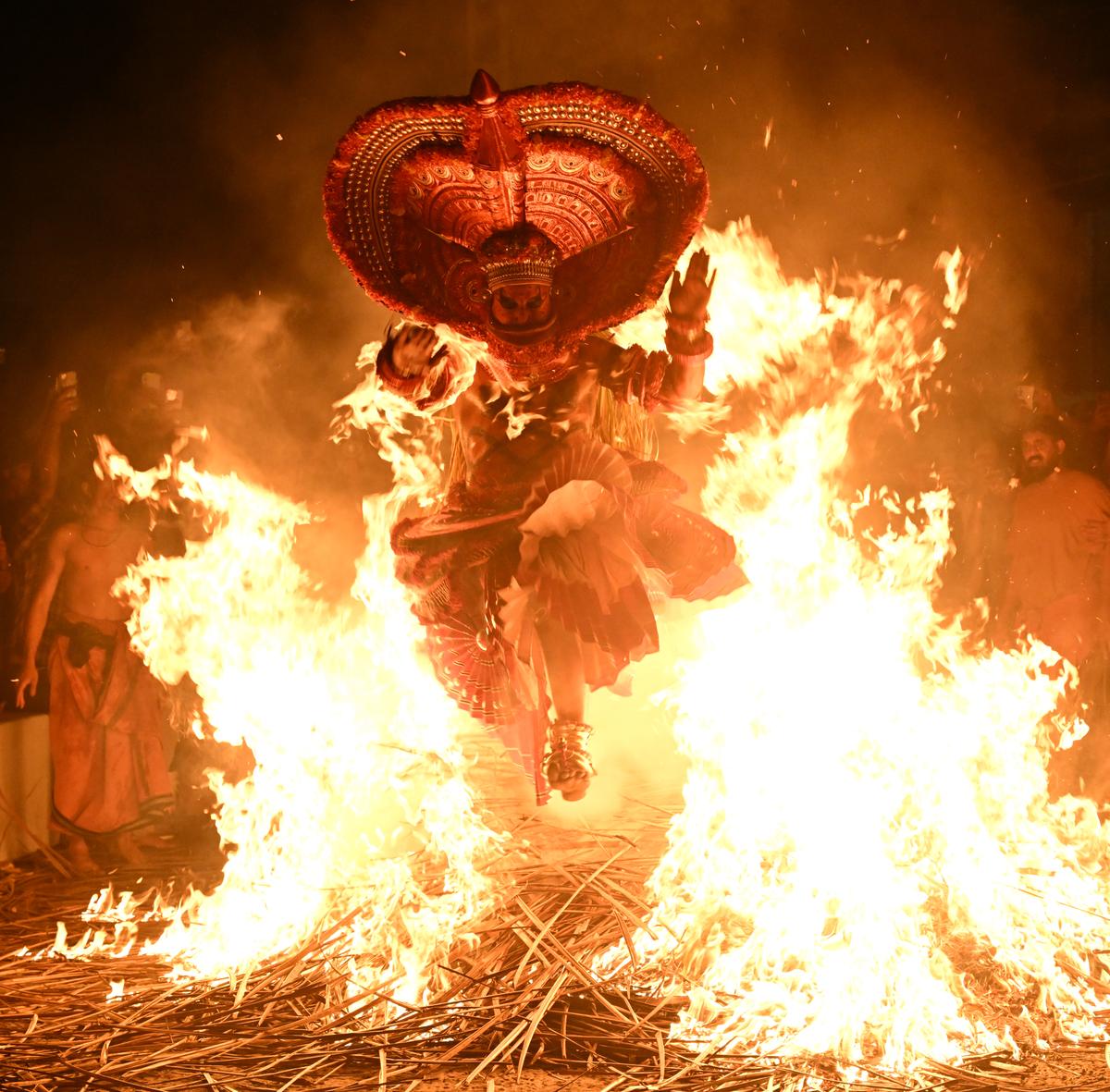
Kandanar Kelan
| Photo Credit:
Thulasi Kakkat
2,000-year-old ritual
We are on a ‘Theyyam Lite’ trip, trying to take in as many performances as we can in a packed schedule in Kasaragod, in northernmost Kerala. The north is the birthplace of the ritualistic art form that typically runs from the tenth day of the Malayalam month of Thulam (in mid-October) till the middle of Edavam (in late May/early June). The ceremony — where the performers represent deities, local heroes and ancestral spirits through elaborate costumes, make-up, and dance — takes place in temples and sacred groves.
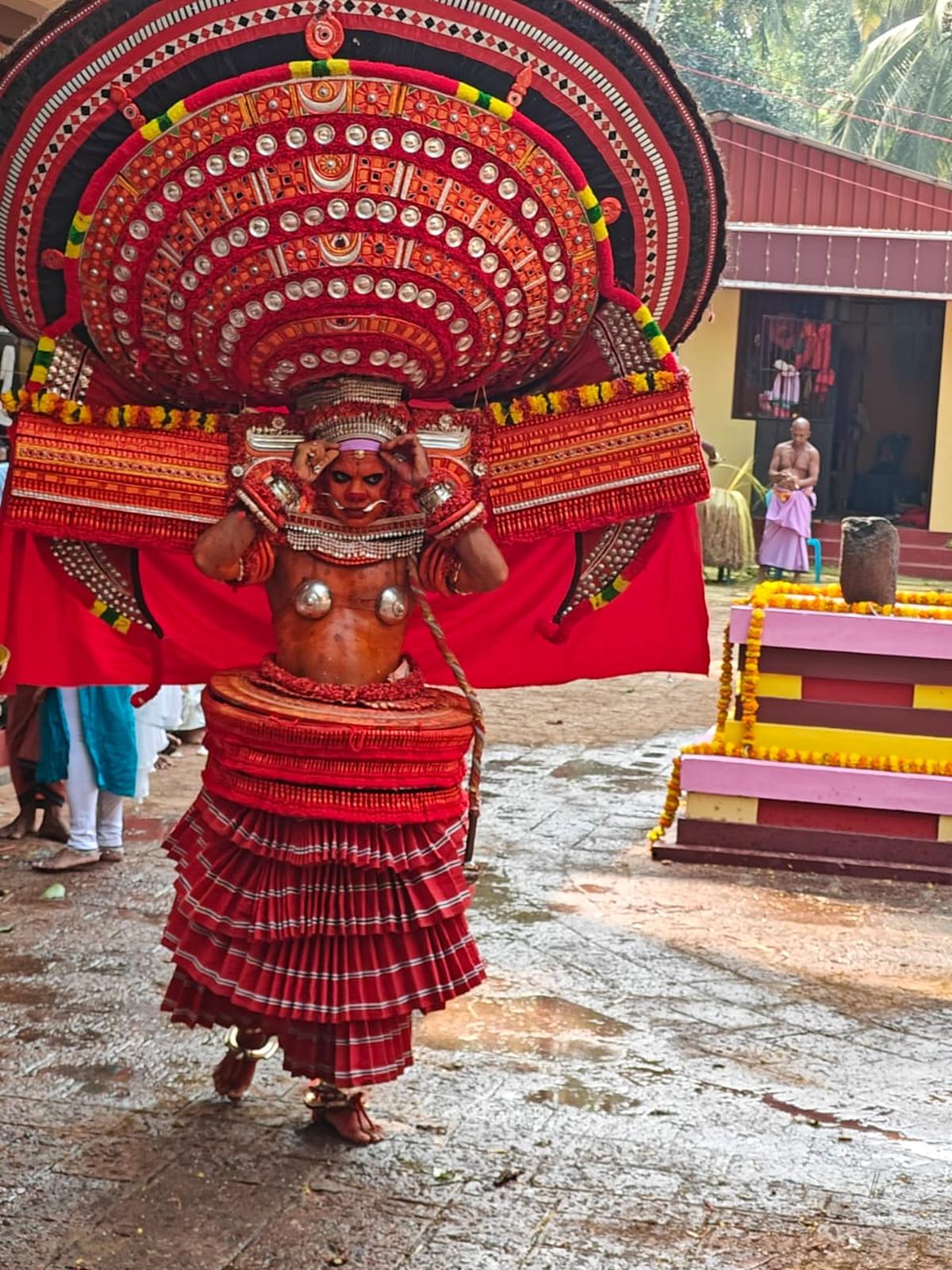
Puliyoor Kali theyyam
| Photo Credit:
Sheila Kumar
We have been hearing reports of huge crowds (more enthusiasts than devotees) massing at theyyams in the Kannur area, mobile cameras out, loud chatter filling the air. Suma, the owner of the Ayurvedic spa next to our resort, congratulates me on having come to Kasargode to watch it. The divinity attached to the ritual diminishes as one goes south, she informs me sagely.
The 2,000-year-old ritual of theyyam has its roots firmly planted in religion. The moment the intricate and fascinating face-writing of the koladhari is finished and the mudi (headgear) is put on, the transformation is complete; it is the deity — Shiva, mother goddess Chamundi, Bhadrakali, Gulikan (a fierce form of Shiva), forest deity, tiger, monkey, snake — who is now controlling the theyyam.
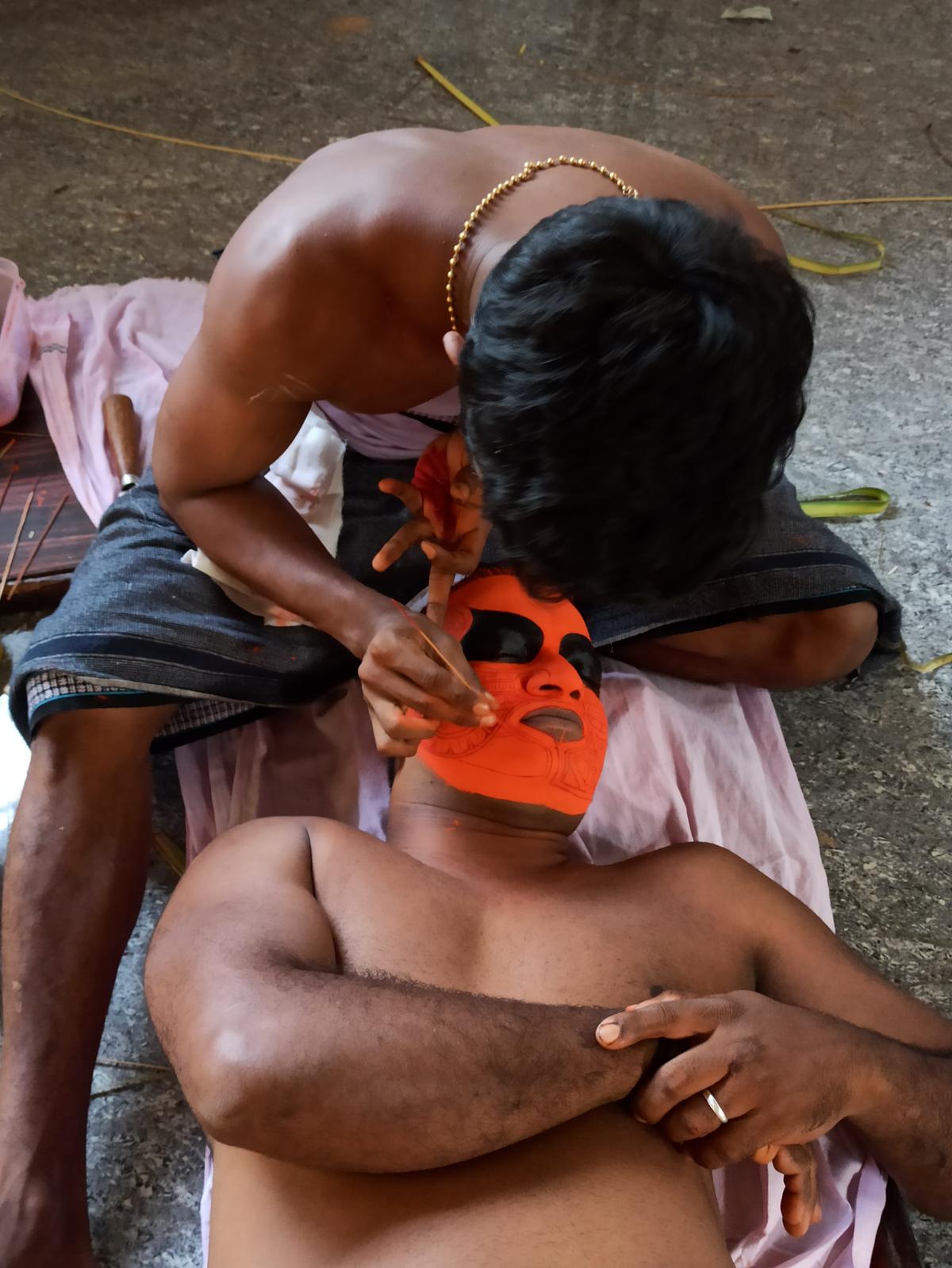
The face-writing process
| Photo Credit:
Sangeeth Bhaskar
There is complete faith evident in the locals, but they carry it lightly, watching the ritual with characteristic impassivity, chatting, casually going up to get blessings from the koladhari afterwards. I watch slack-jawed as quite a few women make a monetary offering to the koladhari, then have his assistant give them change for the large notes they proffer!
The thee theyyam is hard to watch. The koladhari has a protective skirt of ola (palm fronds) around him, but I notice the edges of the skirt are glowing, tiny embers sticking to them. His two assistants, who have mastered the angle at which they must enable him to fall on the fire mound, are glowing with the sweat of their efforts.
Sangeeth tells us of an even more dramatic theyyam, that of Kandanar Kelan, a legendary warrior who survived a forest fire with help from the divine, where the koladhari enters a roaring fire and at times, stands in the middle of it, too. We decide we do not have the stomach for that; as it is, I am gasping every time this koladhari flings himself on the live coals. And he does it 14 times.
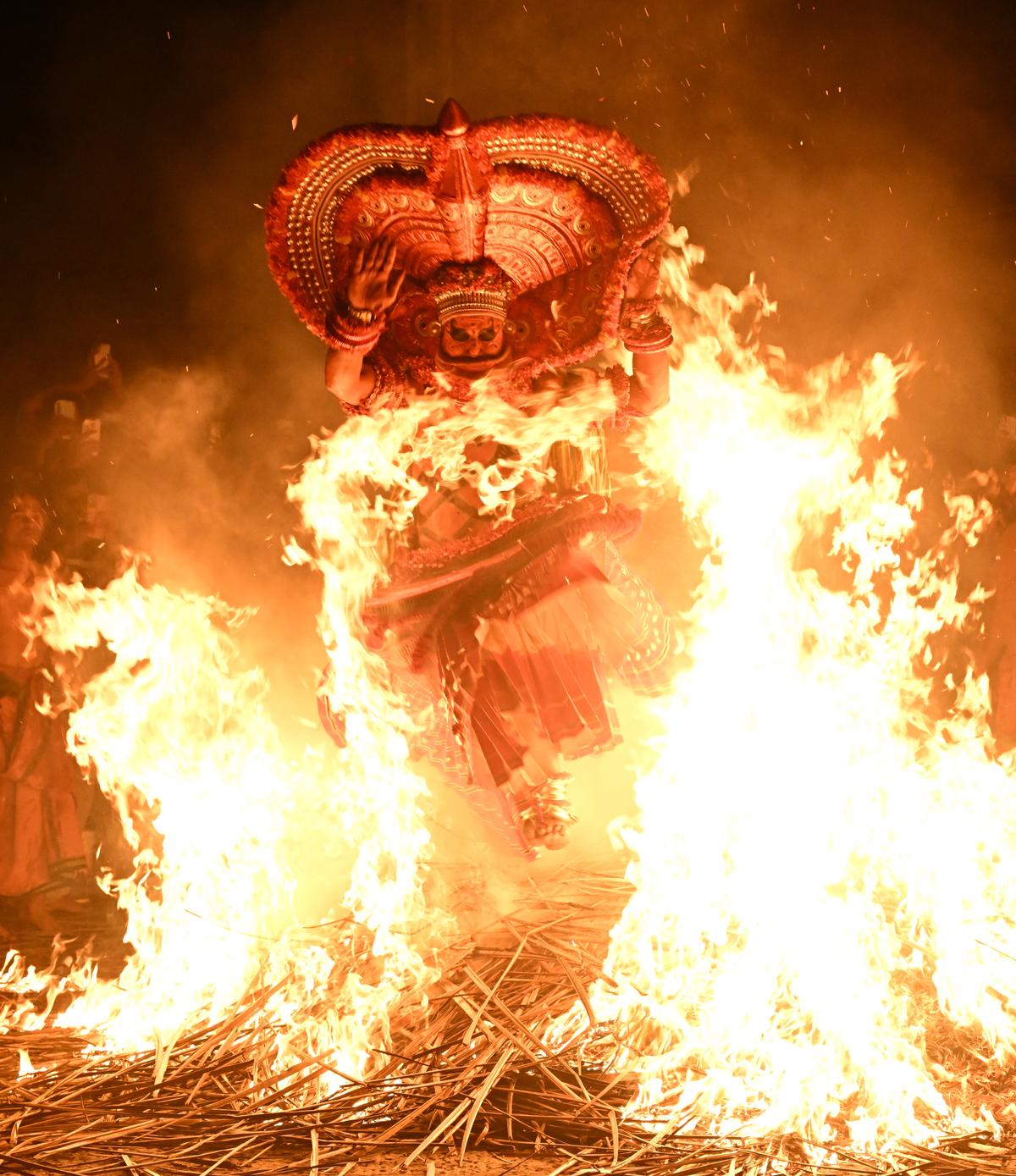
Kandanar Kelan
| Photo Credit:
Thulasi Kakkat
Muthappan and a pug
At the famous Parassini Madappura Sree Muthappan Temple, which is 20 km from Kannur town, we watch the Muthappan (a personification of Vishnu and Shiva) koladhari interact with devotees. Since he is a canine-friendly deity whose familiar is a dog, he blesses a pug too, incongruously dressed in a crimson skirt and blouse.
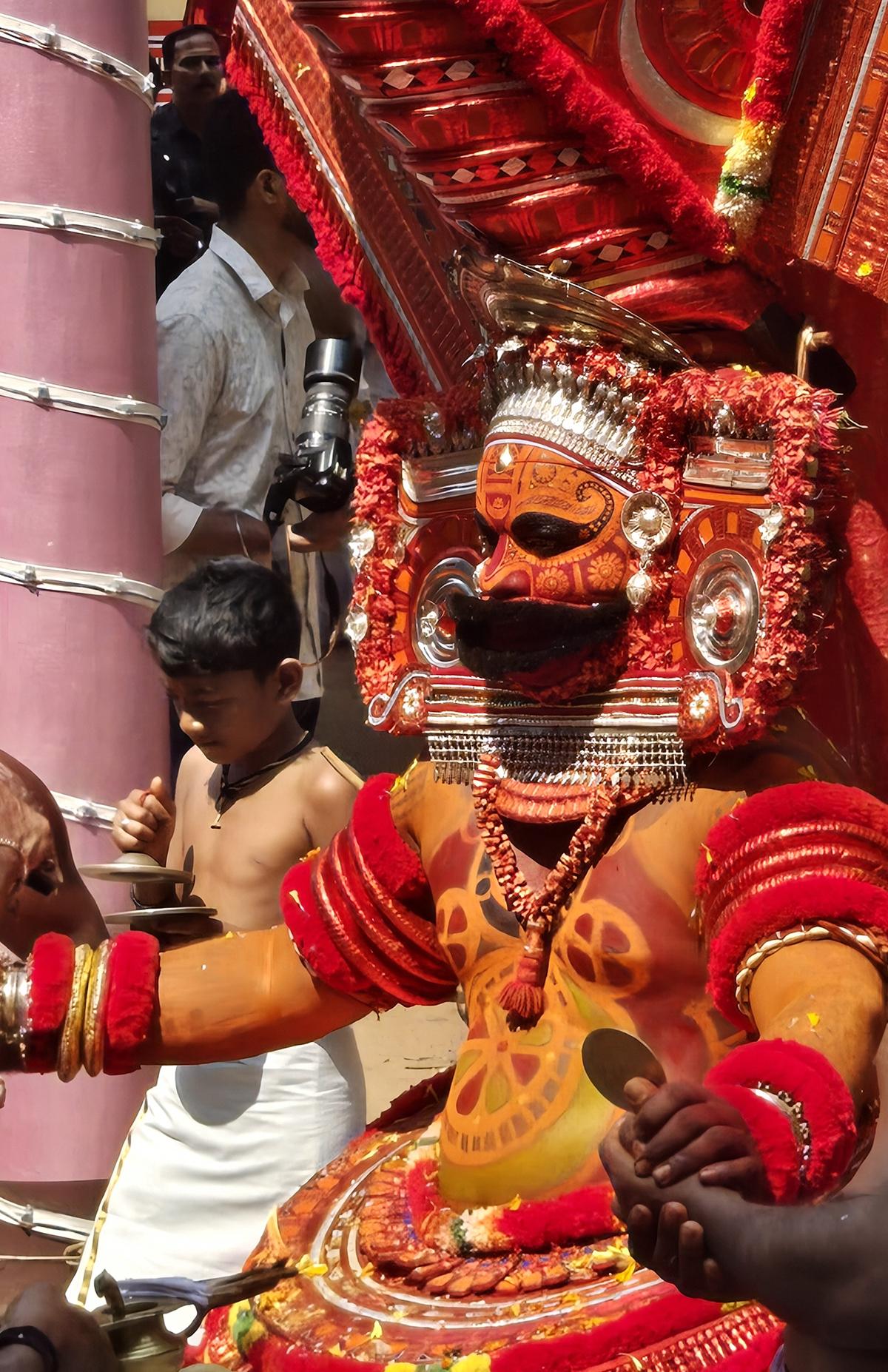
Poomaruthan theyyam
| Photo Credit:
Sheila Kumar
The casual almost festive air is in direct counterpoint to the intensity of the theyyams being performed. At the Adot Moothedath Kuthire Pazhayasthanam Sree Padarkulangara Bhagavathi Devasthanam in Kanhangad — just 12 km from the medieval Bekal Fort, the largest fort in the state — we are given ringside seats by Raghavan, a temple committee member, and repeatedly urged to eat the food prepared at the temple. It’s a community effort, with everyone pitching in to produce a wholesome sadya, topped by a simply divine paruppu payasam. We are seated on a separate platform, heaped plates of food are brought to us by a genial Raju, and we are introduced to a whole host of local dignitaries on their way into the pandal for lunch.
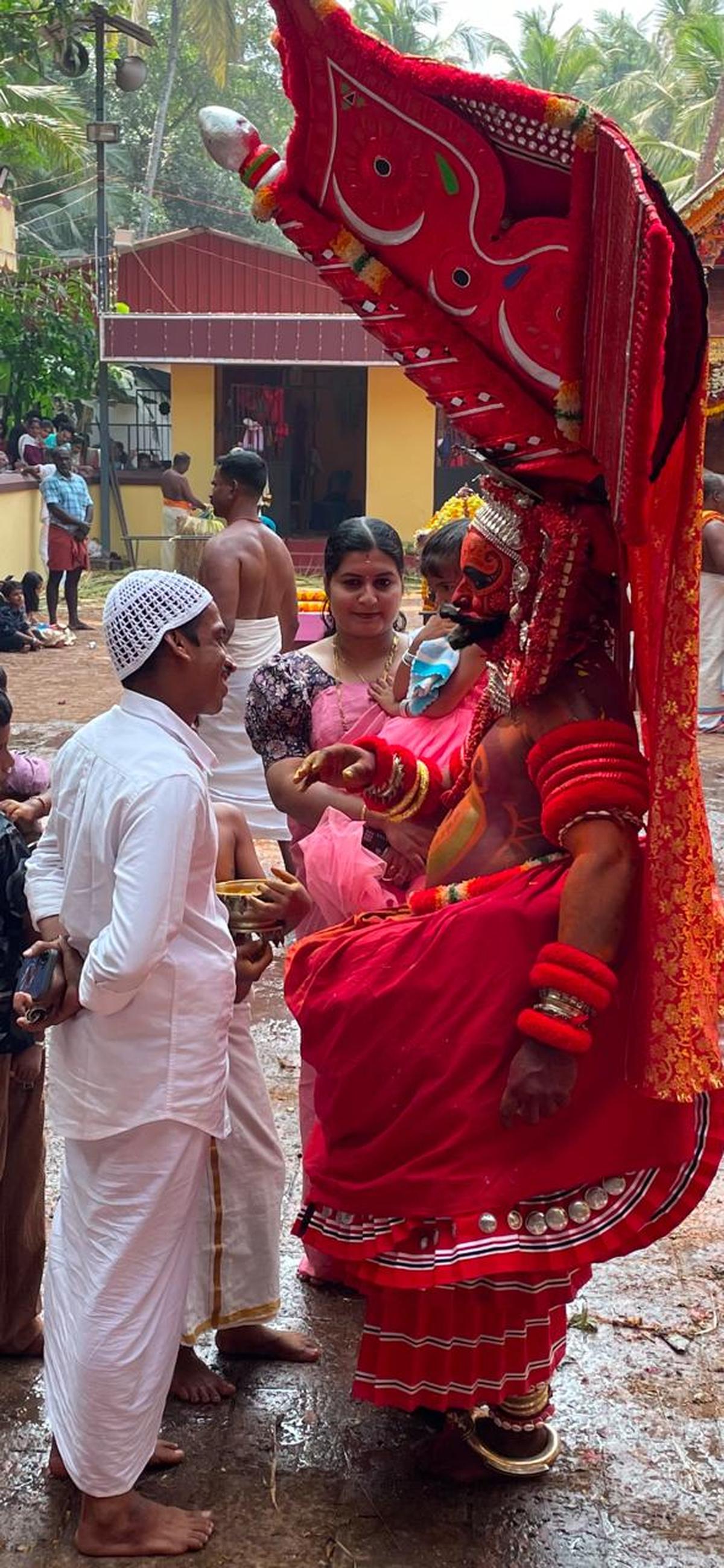
A quiet moment with the koladhari
| Photo Credit:
Sheila Kumar
For me, the best moment of all comes when a young Muslim man in a skull cap comes up to the Poomaruthan theyyam for advice, a beatific smile on his face. Truly, theyyam is for all. And all avail of it, too.
The writer is a Bengaluru-based author, journalist and manuscript editor.
Published – March 21, 2025 12:00 pm IST


